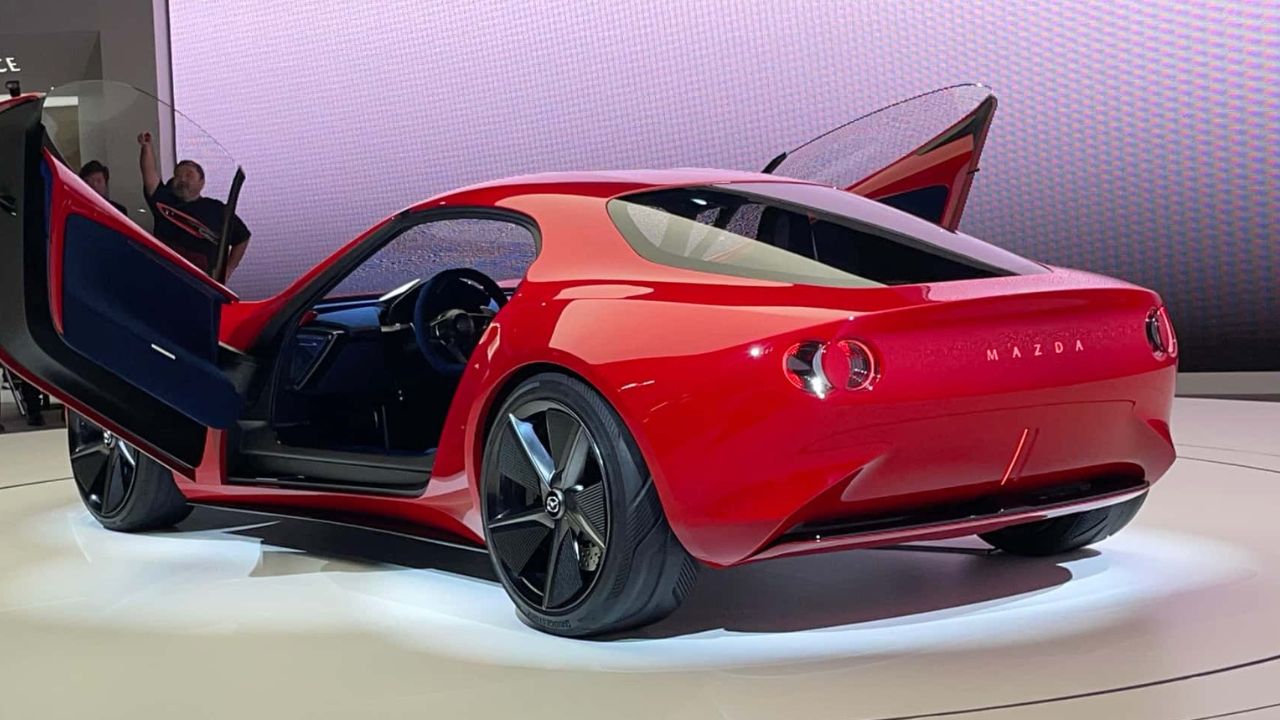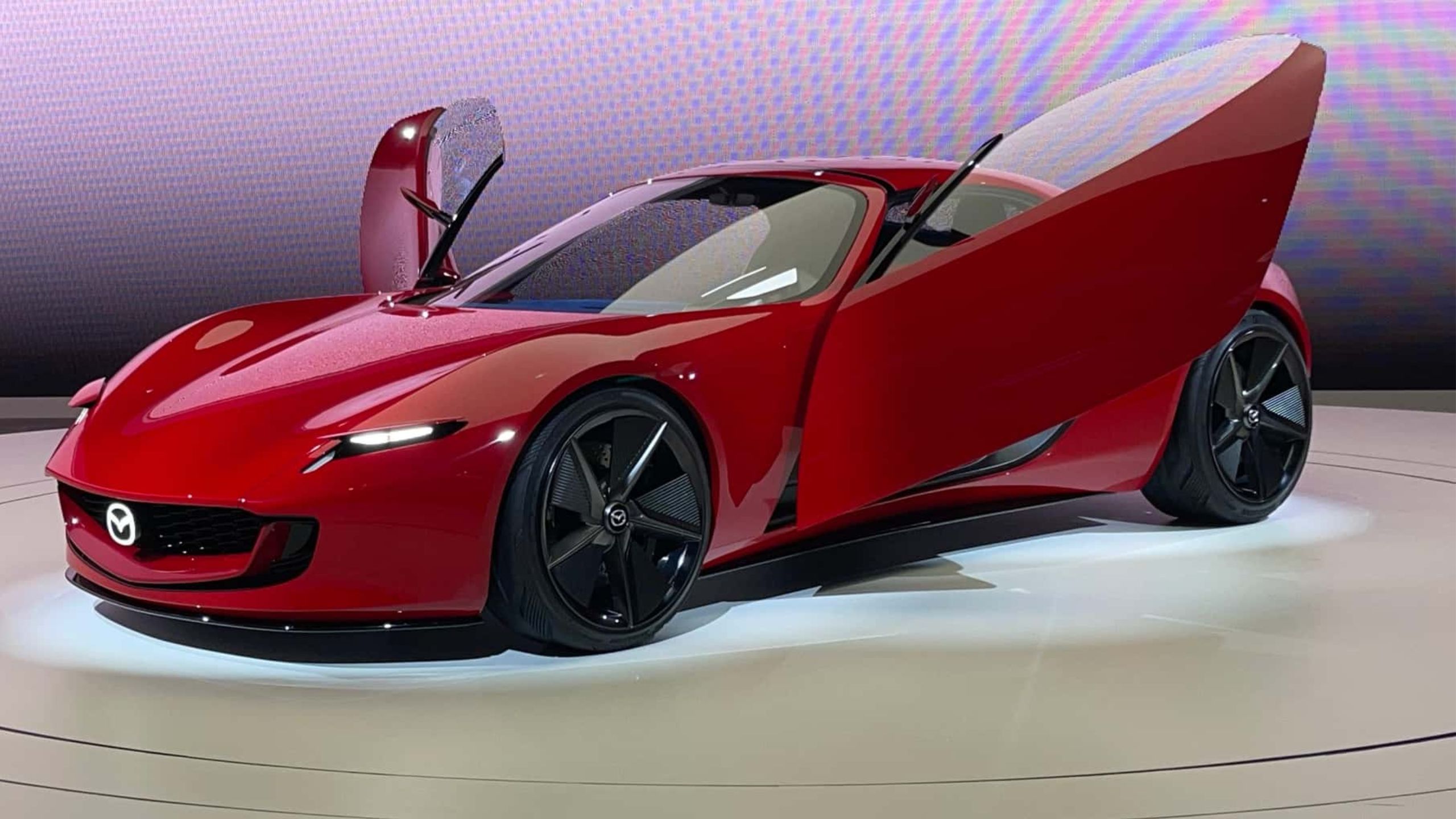Finding someone who doesn’t admire Mazda’s rotary-electric sports car design would be a challenge. Top Gear magazine recently interviewed Masashi Nakayama, Mazda’s chief designer, who was behind the stunning SP concept. Nakayama delved into the creative process that led to its creation.
Unsurprisingly, Nakayama revealed that the RX-7 was the primary muse during the design phase. When asked about the decision to incorporate pop-up headlights, the rationale was refreshingly simple: “Why not? They look cool, don’t they?” Nakayama emphasized that not everything in design needs to adhere strictly to logic, as Mazda aims to deliver designs that transcend conventional reasoning.

The head of Mazda’s design team expressed hopes that the Iconic SP would evoke memories of the RX-7, expressing a desire to contribute to future production models.
The sleek coupe has generated significant anticipation for potential production, especially since Mazda has assembled a dedicated team of 36 engineers focused on crafting “enticing cars that ignite passion.” Mazda’s CEO, Katsuhiro Moro, has voiced aspirations to bring the dream of a rotary sports car closer to reality.
Regarding whether a road-ready model would be a revived RX series or a new MX-5, the latest Top Gear interview leans towards the former. However, Nakayama previously suggested in October 2023, during the debut of the Iconic SP, that the performance coupe could be scaled down to the size of a Miata.
The decision to make the show car larger than necessary was intentional, aiming to make a statement at its world premiere at the Japan Mobility Show. For reference, the concept measures 164.6 inches (4.18 meters) in length, 72.8 inches (1.85 meters) in width, and 45.2 inches (1.14 meters) in height, weighing 3,197 pounds (1,450 kilograms) evenly distributed between the axles.
While significantly larger and heavier than a Miata, Mazda believes it can implement similar hardware in a sports car comparable to the ND model. Unlike direct predecessors like the RX-7 or RX-8, a production model would not have the rotary engine directly powering the wheels.
Instead, the two-rotor combustion engine would act as a generator to charge a battery. In the concept, various fuels such as gasoline, renewable fuels, and hydrogen were explored. Technically, the Iconic SP operated as a plug-in hybrid, featuring a charging port for its unspecified battery pack.

The rear-wheel-drive concept boasted 365 hp, doubling the power output of the current-generation Miata with a 2.0-liter engine. Mazda’s MX-30 e-Skyactiv R-EV small crossover already features a production rotary engine without a direct mechanical link to the wheels.
Looking ahead, if a new sports car were to emerge later in the decade, it would mark the 13th performance model featuring a rotary engine. The fate of the distinctive pop-up headlights in production remains uncertain, given stringent safety regulations. However, solutions like Ferrari’s Daytona SP3 with sliding “eyelids” demonstrate creative workarounds to preserve a similar aesthetic.

